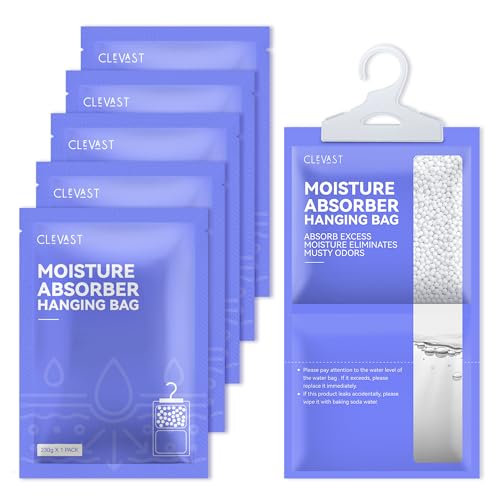The disadvantages of a dehumidifier — everything you need to know before your next purchase
We examine the potential disadvantages of a dehumidifier and what you need to know before you spend your money on one of these appliances

If you’re battling damp or mould issues at home, chances are you’ve been advised to invest in the best dehumidifier your budget allows. But while these appliances are often hailed as must-haves for managing humidity and preventing mould, have you ever paused to consider what the potential disadvantages of a dehumidifier might be?
Dehumidifiers are undeniably effective, but like any appliance, they aren’t without their limitations. From energy use to maintenance requirements, it’s worth considering the bigger picture before making your purchase. After all, understanding both the pros and cons will help you get the most out of your investment.
To bring you a balanced perspective, we turned to dehumidifier and air quality experts for their advice. Here’s what you need to know about the disadvantages of dehumidifiers – and how to navigate them with confidence.
5 disadvantages of a dehumidifier

1. Dehumidifiers consume a lot of energy without smart controls
"Dehumidifiers are designed to operate 24/7," explains Chris Michael, managing director at Meaco. "In fact, this is the only way to ensure the humidity in your home is maintained correctly." However, the cost of running a dehumidifier continuously can significantly increase energy bills, especially if the unit lacks energy-saving features.
Thankfully, many modern models now include smart controls that adjust automatically based on your room’s humidity. These settings allow the unit to turn off once normal humidity levels are reached, helping conserve energy while keeping your home comfortable.
That being said, most budget models and rechargeable dehumidifiers often lack these features. Without automatic controls, you’re left with two choices: running the unit continuously or turning it off entirely. Both options have drawbacks – either higher energy costs or leaving your home vulnerable to excess moisture.

Chris Michael, founder and managing director of Meaco, has over 30 years of experience in the air treatment industry. His company offers a comprehensive selection of air treatment products, with a presence in over 20 countries.
2. Dehumidifiers can be noisy
Dehumidifiers can create a noticeable hum during operation, which might not bother everyone, but it can feel disruptive in quieter spaces like bedrooms, home offices, or living areas where you want to relax. While some people quickly tune out the sound, others may find it harder to ignore, particularly if the unit is running constantly or at a higher fan speed.
Fortunately, you don’t have to resort to soundproofing your home. Look for models that are certified by Quiet Mark, which are specifically designed to operate quietly without sacrificing performance. Placement can also make a big difference. Keeping your dehumidifier on a soft surface or away from walls can help absorb vibrations and reduce noise.
3. Dehumidifiers require regular maintenance
Another drawback of owning a dehumidifier is the upkeep required to keep it running smoothly. Regular dehumidifier maintenance is a must. This includes simple tasks like emptying the water tank, cleaning filters, and keeping the unit dust-free.
Neglecting to clean your dehumidifier or replace its filters on time are common dehumidifier mistakes that can take a toll on your appliance. Over time, these oversights can lead to reduced performance, higher energy bills, and even unpleasant surprises like musty odours or ice building up inside the unit. Keeping up with routine care ensures your dehumidifier will run efficiently and continue to be an asset in your home, rather than a source of frustration.
4. Dehumidifiers can make indoor air too dry
"Running a dehumidifier continuously may lead to overly dry air, which can cause issues like dry skin, respiratory irritation, and even damage to wooden furniture or floors," cautions Glenn Wiseman, Sales Manager at Top Hat Home Comfort Services.
Extended use of a dehumidifier can also disrupt the moisture balance in your home, especially if the air is already on the dry side. Maintaining the right humidity is essential for healthy, comfortable indoor air. Houseplants, for instance, can suffer in overly dry conditions, with leaves turning brown or crispy when moisture levels drop too low.
A hygrometer – such as the Temtop Air Quality Monitor from Amazon – is an easy, affordable tool to help you monitor your home’s humidity levels and avoid stripping the air of essential moisture.
5. Not all dehumidifiers work in cold climates
Most dehumidifiers work best in warmer, more temperate conditions, which means they can struggle in cold or unheated areas like basements during winter. Compressor models, in particular, are prone to freezing up as temperatures drop, causing a noticeable dip in their efficiency.
"Poorly designed dehumidifiers lack an internal cooling system that has been designed for the British climate, so when used in temperatures below 15°C, they can start to accumulate ice on the coils," explains Chris Michael from Meaco. "In even colder environments, such as garages below 10°C, this ice buildup can turn into a solid block, disrupting the unit's performance."
In these cases, a desiccant dehumidifier could be the better option, as it’s designed to work efficiently in cooler temperatures. When choosing between a desiccant vs. compressor dehumidifier, think about the conditions of the space you’ll be using it in to find the right fit for your home.
6. Dehumidifiers aren't suitable for all spaces
While dehumidifiers are incredibly useful in the right environment, there are some spaces where they simply aren’t suitable. For instance, "it's against the law to put a dehumidifier in a space less than 4m²," explains Chris Michael. Small areas like cupboards or compact rooms are not only impractical for dehumidifiers but can also be unsafe.
Bathrooms are another no for dehumidifiers. "Dehumidifiers are not IP rated and therefore cannot be used in a bathroom," Chris adds. "This is why British bathrooms do not have plugs in them – electrical appliances and water just don’t go well together!"
Instead of using a dehumidifier, consider improving your bathroom ventilation with a bathroom extractor fan or by keeping the bathroom door open while placing a dehumidifier in the adjacent hallway.

This unit was hailed as the overall best bathroom extractor fan by the Homebuilding Team, thanks to its impressive extraction rate of 26 litres per second.
7. You may actually need an air purifier
While a dehumidifier is great for removing excess moisture, it won’t tackle allergens, pollutants, or odours that can impact indoor air quality and cause discomfort. For issues like dust, pet dander, or smoke, an air purifier may be a better choice.
Deciding between an air purifier vs dehumidifier comes down to your specific needs. However, if you’re dealing with both excess humidity and air quality concerns, hybrid 2-in-1 models are available that can handle both tasks. These appliances control moisture levels while filtering the air, but they tend to come with a higher price tag and may not perform as well as standalone devices.

This smart dehumidifier features an anti-odour carbon filter and optional HEPA filter. It uses less energy than most dehumidifiers and extracts up to 12L per day.
8. Dehumidifiers won't fix serious underlying mould or damp issues
While a dehumidifier can certainly help manage moisture, it’s not a cure-all for more severe structural issues like leaks, mould, or poor home ventilation.
"To believe that dehumidifiers will solve underlying issues is incorrect," states James Longley, managing director at Utility Bidder. "While these appliances are useful for lowering moisture levels in the air, which in turn helps reduce condensation and mould, other steps are necessary to keep on top of issues such as mould growth. For example, creating good airflow by opening windows when the dehumidifier is switched off and taking shorter showers to minimise steam can make a significant difference."
If you’re dealing with persistent dampness or mould in your home, it's a good idea to consult a professional to identify the source of the issue. Fixing leaks, improving home insulation and making structural repairs are often a more permanent – and necessary – solution than relying solely on a dehumidifier.

James Longley is Managing Director and Founder of Utility Bidder, an award-winning business energy consultancy in the UK.
FAQs
What are good alternatives to using a dehumidifier?
"If you're just experiencing a temporary spike in your humidity levels, there’s no need to buy and use a dehumidifier," explains John Jordan president at Integrity Heating & Cooling Inc. "In such situations, it’s better to use less heavy duty solutions, something like budget-friendly moisture absorbers that come in buckets or hanging moisture absorbers."
"If your goal is to reduce humidity in your home, make the air move by keeping the interior doors open, running ceiling fans, and opening windows for 10 minutes every day," John continues. This process is often referred to as 'house burping'. "When the air is stagnant and not circulating, moisture from everyday activities like cooking, showering, and even breathing can’t disperse, leading to humidity buildup."
Shop the best dehumidifier alternatives

This pack of hanging dehumidifiers is ideal for keeping your wardrobes and cupboards free from moisture. They can be used for up to 60 days and take up very little space.
For all the disadvantages of a dehumidifier, there are plenty of advantages to consider too. For example, a dehumidifier can be used to dry clothes and to clear window condensation.
Get the Homebuilding & Renovating Newsletter
Bring your dream home to life with expert advice, how to guides and design inspiration. Sign up for our newsletter and get two free tickets to a Homebuilding & Renovating Show near you.

Gabriella is an interiors journalist and has a wealth of experience creating interiors and renovation content. She was Homebuilding & Renovating's former Assistant Editor as well as the former Head of Solved at sister brand Homes & Gardens, where she wrote and edited content addressing key renovation, DIY and interior questions.
She’s spent the past decade crafting copy for interiors publications, award-winning architects, and leading UK homeware brands. She also served as the Content Manager for the ethical homeware brand Nkuku.
Gabriella is a DIY enthusiast and a lover of all things interior design. She has a particular passion for historic buildings and listed properties, and she is currently in the process of renovating a Grade II-listed Victorian coach house in the West Country.


